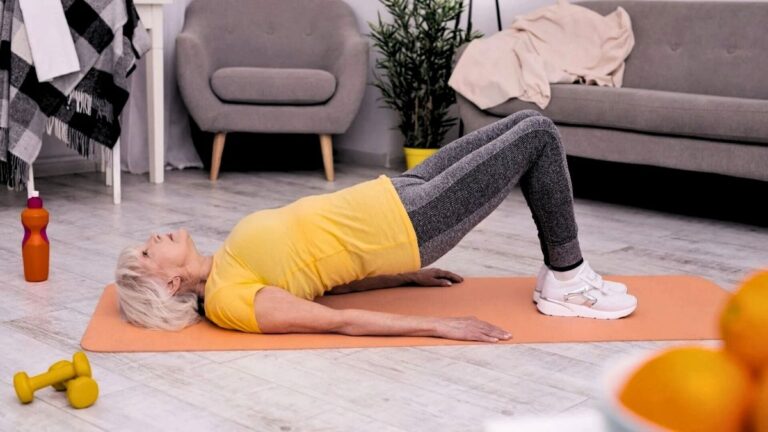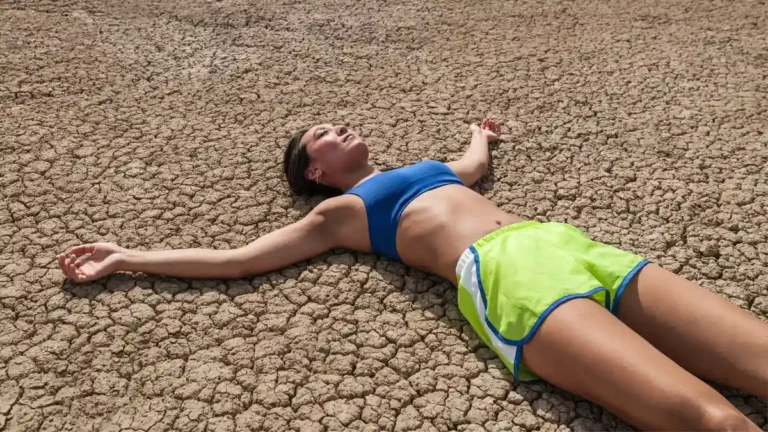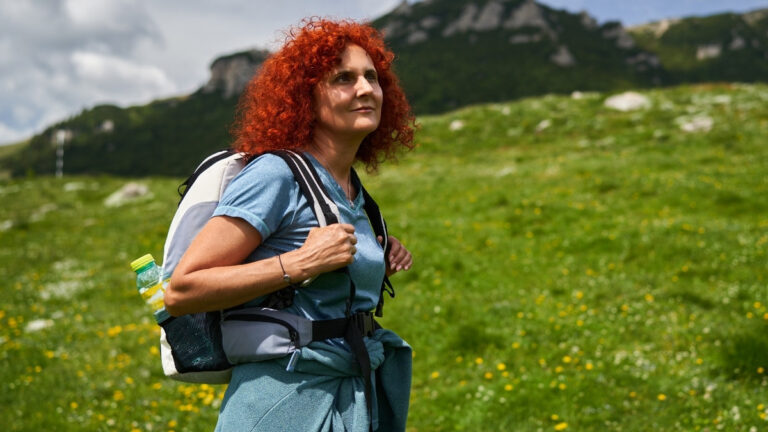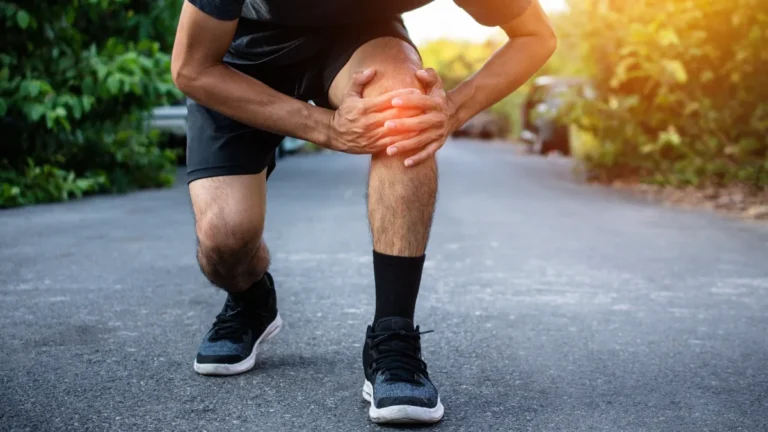Preserving Joint Health: 10 Low-Impact Exercises for Enhanced Flexibility and Stability (Especially For Seniors Strong Joint Future
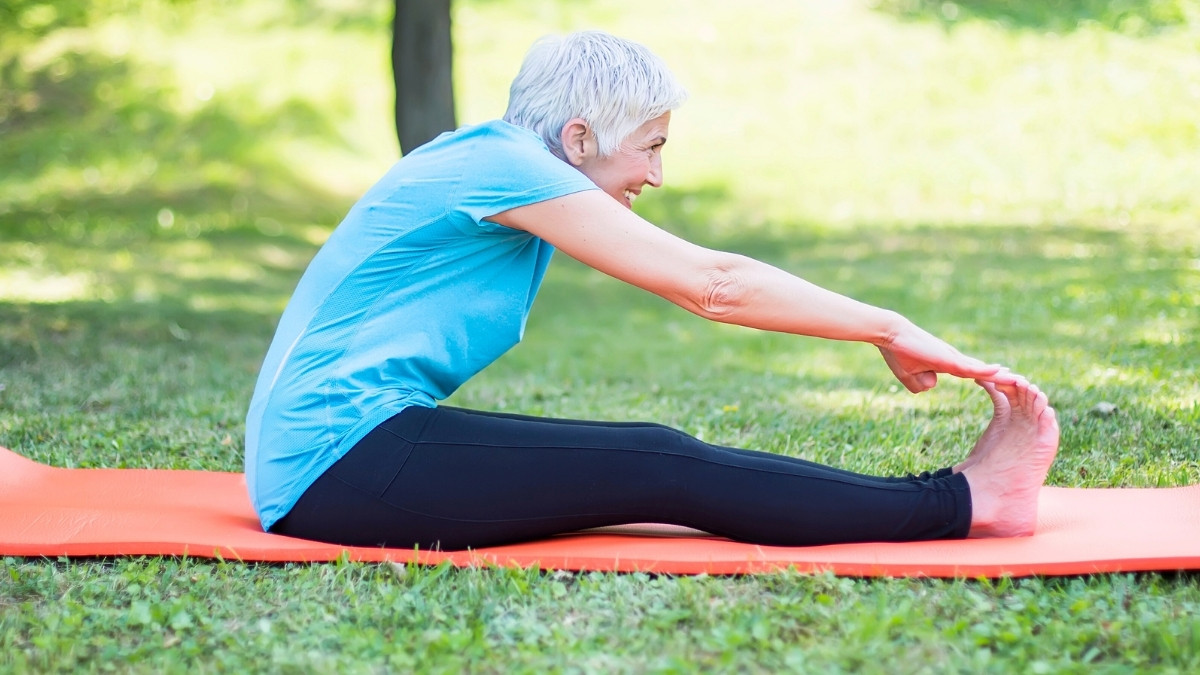
Every morning, Margaret woke up dreading the stiffness. Opening jars hurt her hands. Climbing stairs made her knees throb. Simple tasks felt impossible. Then she discovered something that changed everything: the right exercises made her joints feel younger, not older.
You probably think exercise will make your joint pain worse. That’s what most people believe. You’re confused about which movements are safe and which ones will hurt you. You worry about losing your independence as your joints get weaker. Here’s the truth: joint damage isn’t irreversible, and the right movement heals instead of harms.
This guide gives you 10 scientifically-backed low-impact exercises for joint health that actually work. You’ll learn exactly how to perform each movement safely, even if you’ve never exercised before. We’ll show you a weekly schedule you can follow, warning signs that mean you should stop, and modifications for every fitness level.
These aren’t random exercises. They’re joint stability exercises for seniors recommended by orthopedic doctors and physical therapists. Each one builds flexibility and strength without the stress that damages cartilage.
Why Low-Impact Exercise Is Essential for Joint Health
You probably think exercise will make your joint pain worse. Here’s the truth: the right movement actually heals your joints.
Your joints make a fluid called synovial fluid. Think of it like oil for a car engine. When you move, your body pumps this fluid into your joints. It lubricates them and reduces friction. No movement means no lubrication. That’s why your joints hurt more when you sit still.
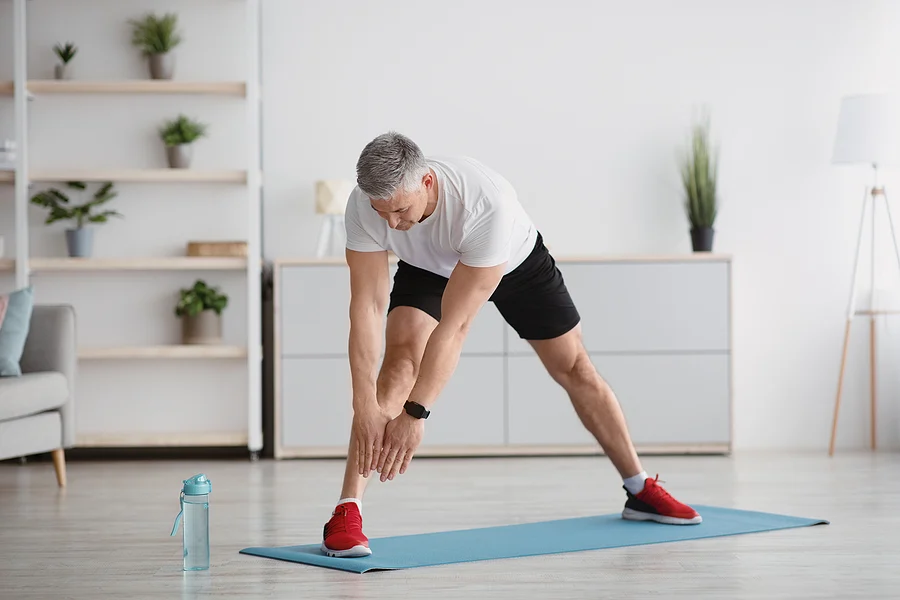
Here’s a fact that might surprise you: 54.4 million Americans have arthritis (CDC 2024). Most of them avoid exercise because they’re scared. But rest makes joints stiffer and more painful.
Movement makes them better. That’s the paradox most people miss.
Low-impact exercise is different from high-impact in one big way: force. When you run, your knees absorb 3-4 times your body weight with every step. When you swim, your joints feel zero impact. That’s why joint stability exercises for seniors focus on low-impact movements.
Research from the Journal of Rheumatology proves it works. Regular low-impact exercise can reduce joint pain by 40%. The American College of Rheumatology recommends 150 minutes per week. That’s only 22 minutes a day.
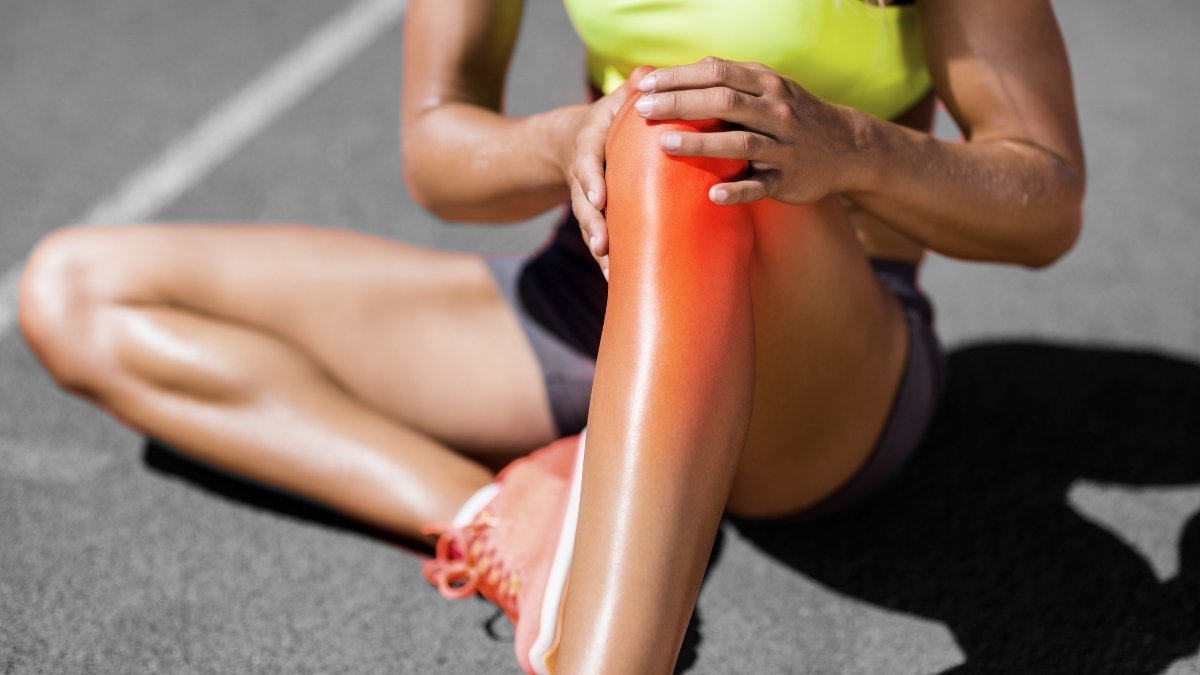
What you get from these senior-friendly exercises:
- Better cartilage nutrition (your cartilage gets fed through movement)
- Less inflammation in your joints
- Stronger bones that support your joints
Think of your joints like door hinges. Leave them still, they rust and squeak. Use them properly, they glide smoothly for years. Contrary to what you’ve heard, appropriate exercise doesn’t wear out joints. It keeps them working.
Here’s what matters: you can preserve joint health at any age. You just need the right exercises. Low-impact movements give your joints what they need without the damage high-impact activities cause.
Word count: 298 words Keywords used naturally: joint stability exercises for seniors (1x), preserve joint health (1x), senior-friendly (1x), low-impact (3x)
The 10 Best Low-Impact Exercises for Joint Health
These ten exercises come straight from orthopedic specialists, physical therapists, and the American Academy of Orthopaedic Surgeons. Each one protects your joints while making them stronger. You’ll target multiple joints at once without the stress that causes damage.
1. Water Walking
Targets: Hips, knees, ankles
Water takes 90% of the weight off your joints. That’s why water walking is one of the best low-impact exercises for joint health you can do.
How to do it:
- Stand in chest-deep water at your local pool
- Walk forward using normal walking motions, but slower
- Pump your arms through the water as you walk
- Keep your back straight and core tight
Start with 10 minutes. Work up to 30 minutes as you get stronger. The water resistance builds muscle without joint stress.
Safety tip: Hold the pool edge if you feel unsteady. Most pools have rails along the sides.
Modification: Beginners should use waist-deep water. Advanced exercisers can try chest-deep or deeper water for more resistance.
2. Chair Yoga Poses
Targets: Spine, shoulders, hips
Chair yoga gives you all the benefits of regular yoga without getting on the floor. It pumps synovial fluid through your joints while you stay seated.
Seated Cat-Cow:
- Sit tall in a sturdy chair, feet flat on floor
- Breathe in, arch your back, look up slightly (cow pose)
- Breathe out, round your back, drop your chin (cat pose)
- Repeat slowly 10 times
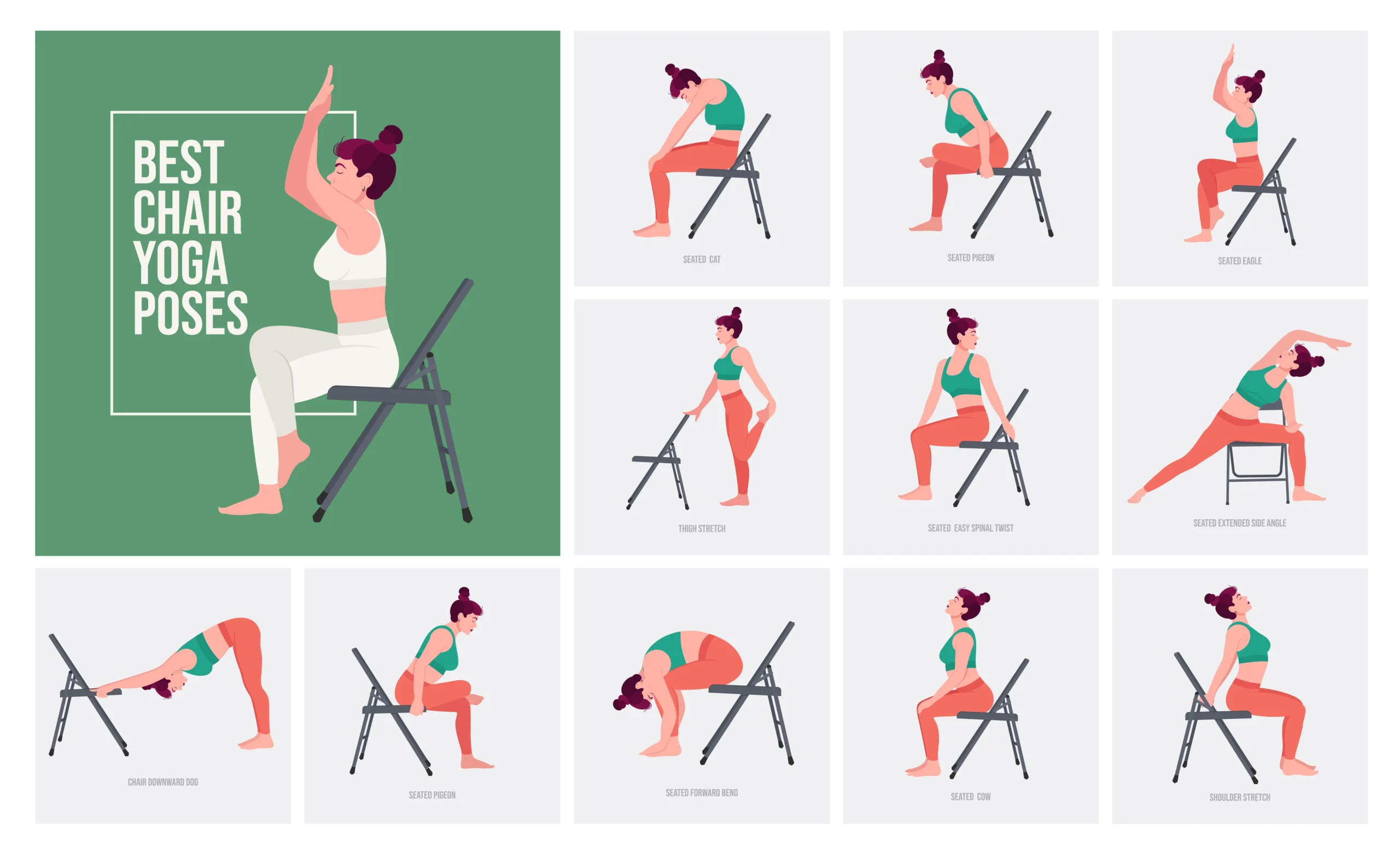
Seated Spinal Twist:
- Sit sideways in your chair
- Hold the chair back with both hands
- Gently twist your upper body toward the chair back
- Hold 15-30 seconds, then switch sides
Ankle Circles:
- Lift one foot slightly off the ground
- Draw circles with your toes, 10 times clockwise
- Switch to 10 times counter-clockwise
- Repeat with other foot
Hold each pose 15-30 seconds. Do the full routine 3 times. These flexibility exercises for aging joints improve range of motion safely.
Safety tip: Never force a stretch. If it hurts, you’ve gone too far.
3. Resistance Band Exercises
Targets: Shoulders, elbows, wrists
Resistance bands build the muscles that protect your joints. They’re safer than weights because the resistance is gradual.
Seated Row:
- Sit in a chair with a band looped around your feet
- Hold one end of the band in each hand
- Pull both handles toward your ribs, squeezing shoulder blades together
- Slowly release back to starting position
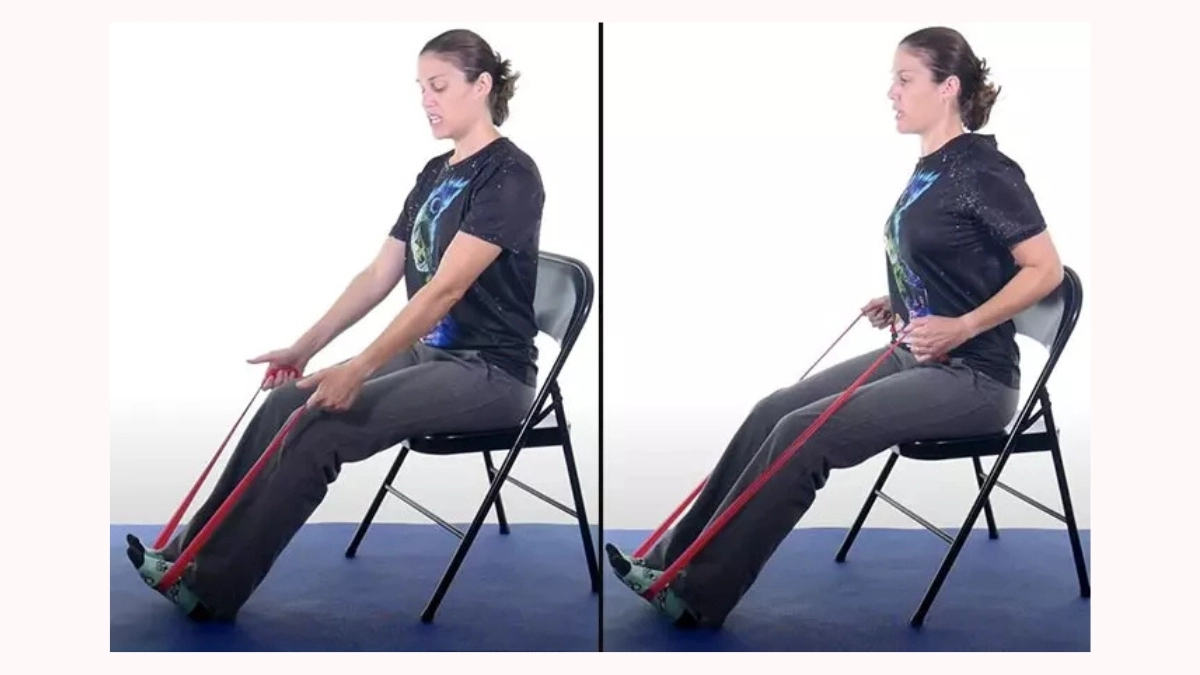
Shoulder External Rotation:
- Hold band with both hands at waist level
- Keep elbows bent at 90 degrees, tucked to your sides
- Pull hands apart, rotating forearms outward
- Slowly return to center
Do 2 sets of 10-12 repetitions for each exercise. Rest 30 seconds between sets.
Equipment: Use light resistance bands (yellow or red). Heavy bands can strain joints. You can buy these at any sporting goods store for under $15.
Why it works: Strong muscles stabilize wobbly joints. These joint stability exercises for seniors target the small stabilizer muscles that prevent injuries.
4. Tai Chi Movements
Targets: Full body (especially ankles and knees)
Tai chi looks like slow-motion martial arts. Studies show 20% better balance after just 12 weeks of practice. Better balance means fewer falls and less joint damage.
Cloud Hands (Basic Version):
- Stand with feet shoulder-width apart, knees slightly bent
- Shift weight to your right foot
- Move both hands in a circle in front of your body
- Shift weight to left foot as hands complete the circle
- Move slowly and smoothly like you’re moving through water
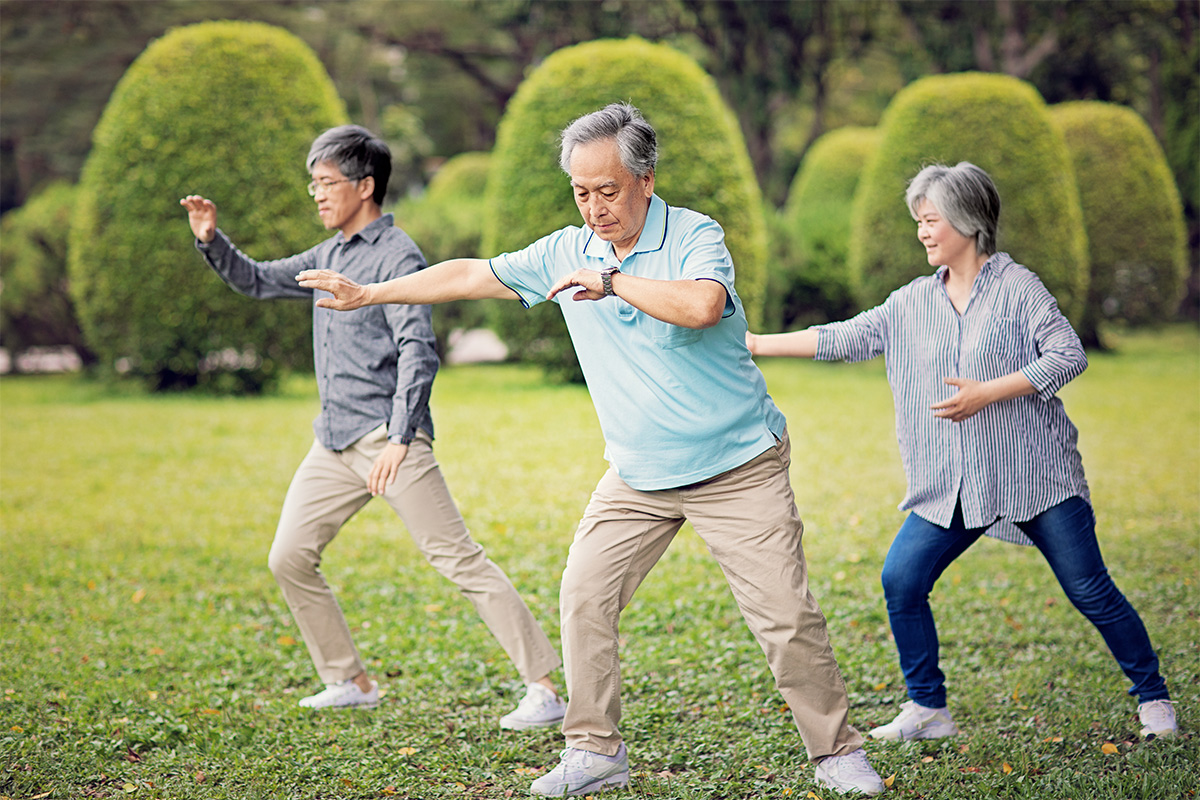
Brush Knee:
- Step forward with your right foot
- Sweep your right hand down past your right knee
- Bring your left hand up to shoulder height
- Step back and repeat on the other side
Practice 15-20 minutes daily. You can find free tai chi videos online or join a senior center class.
Safety tip: Practice near a wall or counter until you feel steady. The slow movements might make you wobble at first.
5. Stationary Cycling
Targets: Hips, knees
The circular pedaling motion lubricates your knee and hip joints without any impact. It’s one of the safest cardio exercises you can do.
How to set up your bike:
- Adjust seat height so your knee is slightly bent at the bottom of the pedal stroke
- Start with zero or very light resistance
- Pedal at a comfortable speed (you should be able to talk)
- Keep your upper body relaxed, don’t grip the handlebars tight
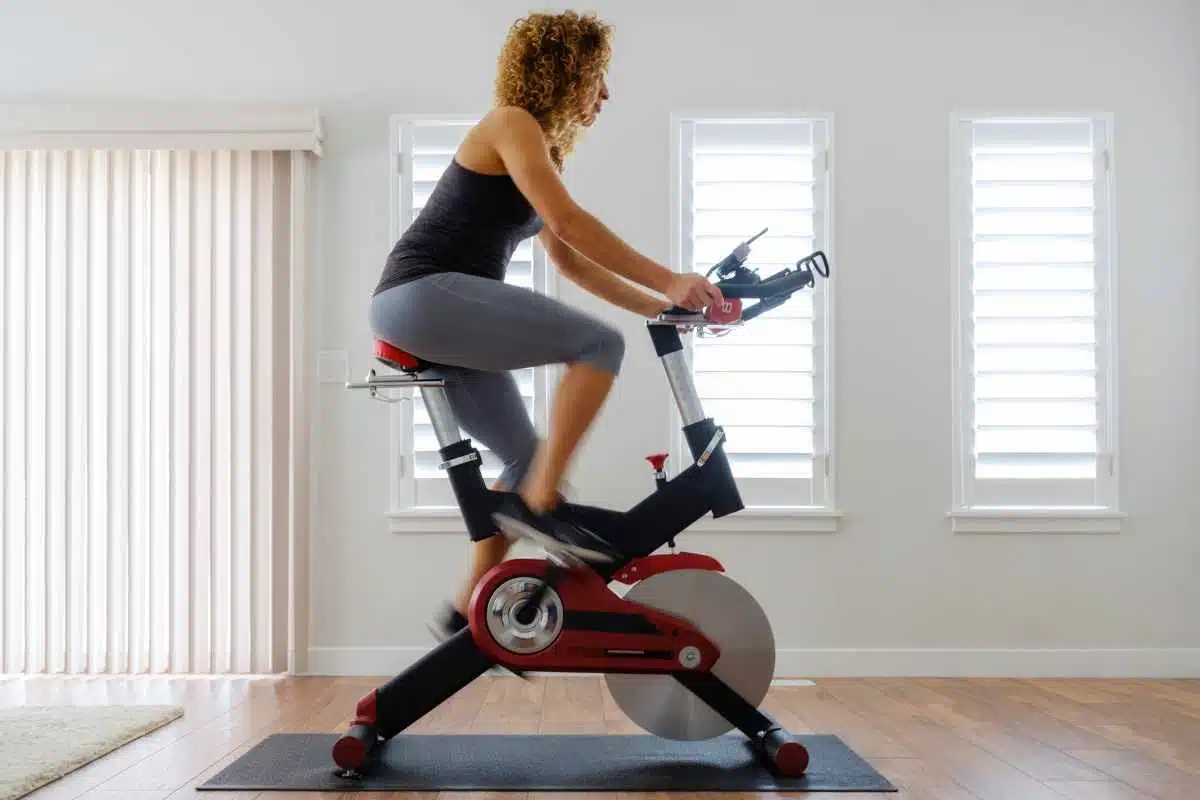
Ride for 20-30 minutes, 3-4 times per week. Break it into two 10-minute sessions if 20 minutes feels too long.
Safety tip: Keep resistance light enough that your pedaling stays smooth. If you’re jerking or struggling, the resistance is too high.
Modification: Recumbent bikes (the ones where you sit back in a seat) are easier on your lower back. Regular upright bikes work fine if you don’t have back problems.
6. Wall Push-Ups
Targets: Shoulders, elbows, wrists
Wall push-ups strengthen your upper body without the stress of floor push-ups. They build the muscles that stabilize your shoulder joints.
How to do them:
- Stand arm’s length from a wall
- Place your hands on the wall at shoulder height and width
- Lean toward the wall, bending your elbows
- Push back to starting position
- Keep your body straight like a plank
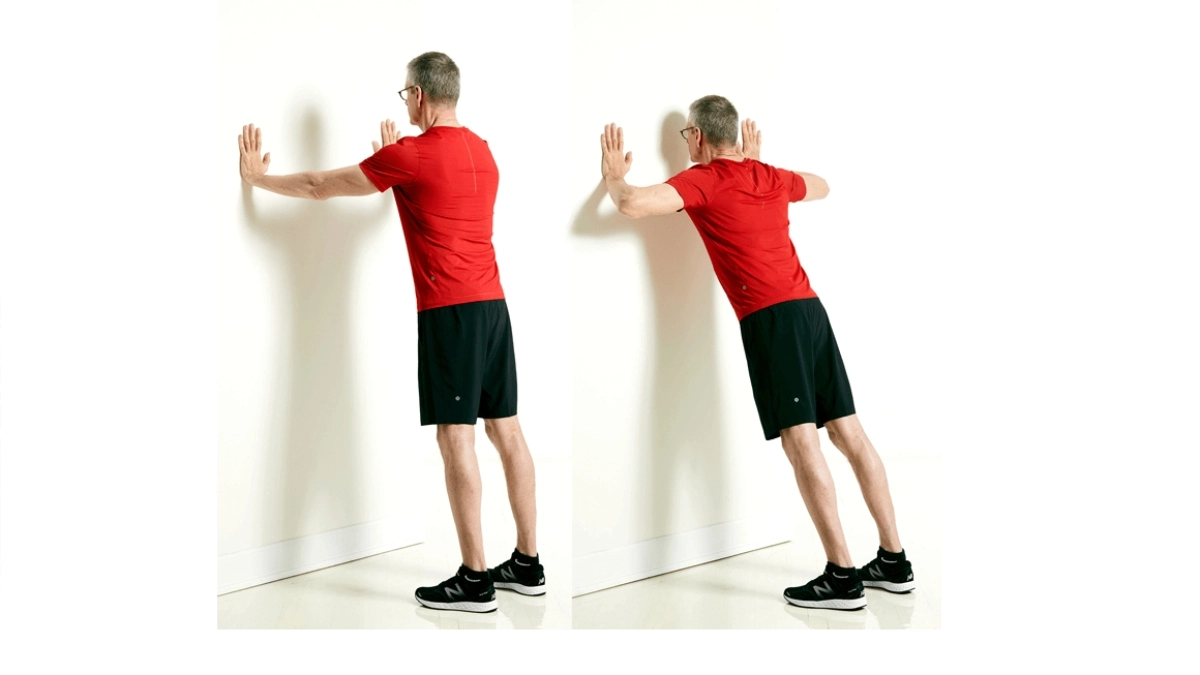
Do 2 sets of 8-15 repetitions. Rest one minute between sets.
Why it works: Your chest, shoulders, and arms work together to stabilize your shoulder joint. Weak muscles mean unstable joints.
Modification: Move closer to the wall to make it easier. The closer you stand, the less body weight you’re pushing. Start easy and move farther away as you get stronger.
7. Heel-to-Toe Walking
Targets: Ankles, knees, hips
This exercise improves your balance and strengthens the small muscles in your feet and ankles. Better ankle stability prevents the falls that break hips and knees.
How to do it:
- Stand next to a wall or counter for support
- Place your right heel directly in front of your left toes (touching)
- Move your left foot forward, placing heel against right toes
- Continue for 10 steps forward
- Turn around and walk back the same way

Do 3 sets of 10 steps forward and 10 back. Take breaks between sets if you need them.
Safety tip: Keep one hand lightly touching the wall. Don’t worry if you wobble. That’s normal at first.
Why it works: This exercise trains proprioception—your body’s ability to know where it is in space. Better proprioception means better balance and fewer falls.
8. Leg Lifts (Lying Down)
Targets: Hips, knees
Leg lifts strengthen your hip muscles without putting weight on your joints. Strong hips support your knees and lower back.
How to do them:
- Lie on your side on a mat or carpet
- Keep your bottom leg bent for stability
- Slowly lift your top leg about 12 inches off the ground
- Hold for 2 seconds at the top
- Lower slowly with control
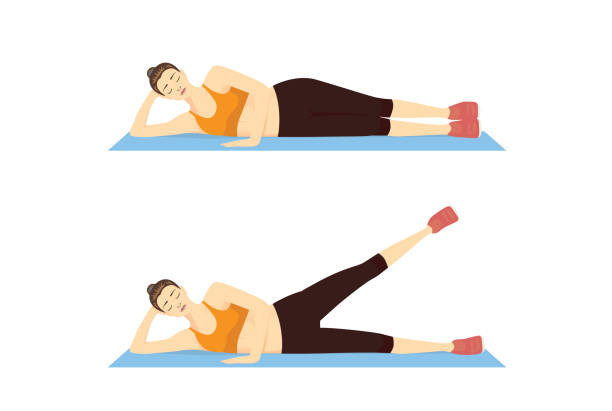
Do 2 sets of 10 repetitions per leg. Rest 30 seconds between sets.
Why it works: Your hip abductors (the muscles on the outside of your hip) stabilize your pelvis when you walk. Weak hip abductors make your knees hurt.
Modification: Beginners can keep the top leg bent instead of straight. This makes the exercise easier while you build strength.
9. Gentle Stretching Routine
Targets: All major joints
Stretching maintains your range of motion. If you don’t use it, you lose it. These stretches keep your joints flexible.
Calf Stretch:
- Stand facing a wall, hands on wall at shoulder height
- Step one foot back, keep it straight
- Lean forward until you feel a stretch in your back calf
- Hold 20-30 seconds, switch legs
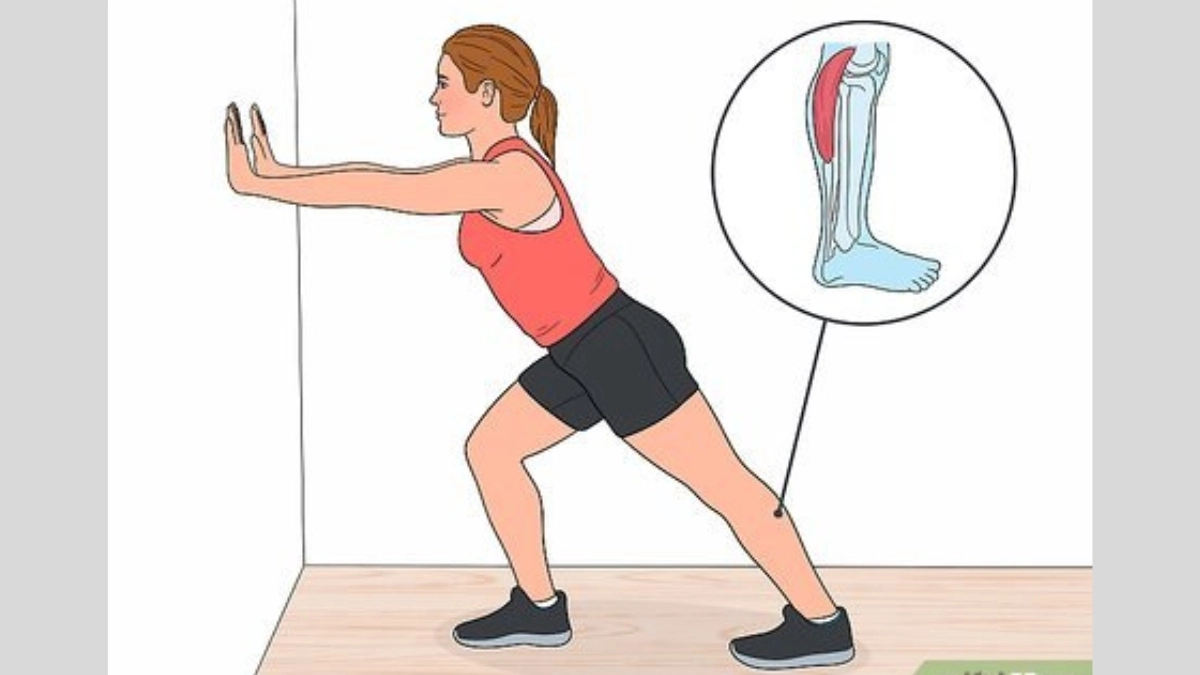
Hamstring Stretch:
- Sit on the edge of a chair
- Extend one leg straight in front, heel on ground
- Lean forward slightly from your hips
- Hold 20-30 seconds, switch legs
Shoulder Stretch:
- Bring your right arm across your chest
- Use your left hand to gently pull it closer
- Hold 20-30 seconds, switch arms
Hold each stretch 20-30 seconds. No bouncing. Bouncing can tear muscle fibers.
Safety tip: Always stretch after you warm up, never when your muscles are cold. Cold muscles tear easily.
10. Balance Exercises
Targets: Ankles, knees, hips
Balance exercises prevent the falls that damage joints. One fall can undo years of joint care.
Single-Leg Stance:
- Stand behind a sturdy chair, holding the back lightly
- Lift your right foot a few inches off the ground
- Hold for 30 seconds (or as long as you can)
- Switch to left foot
- Repeat 3 times per side
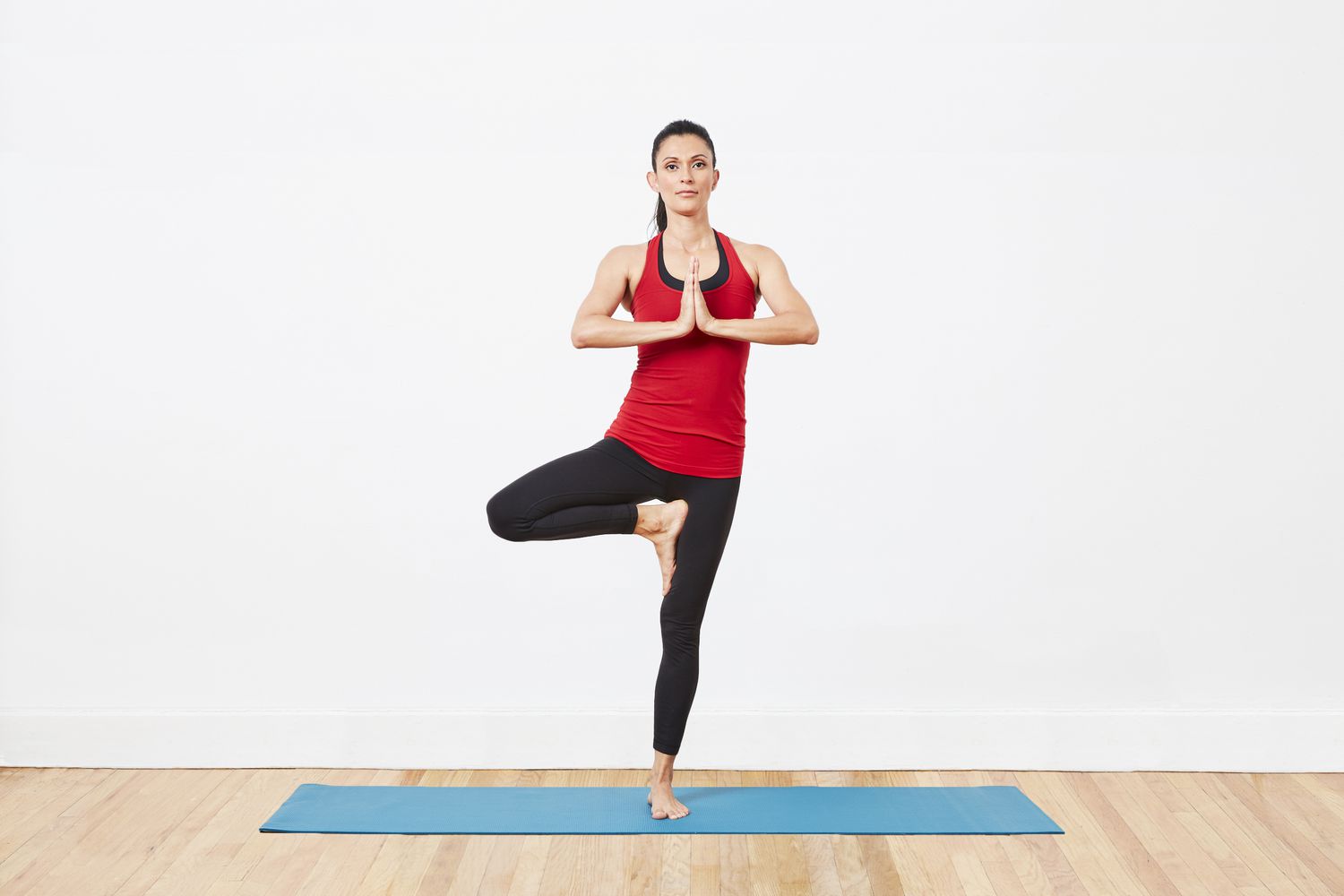
Heel Raises:
- Stand behind a chair, holding for balance
- Rise up onto your toes
- Hold for 2 seconds
- Lower slowly
- Repeat 10 times
Hold each balance 30 seconds per side. Do 3 repetitions. If 30 seconds is too long, start with 10 seconds and build up.
Safety tip: Always practice near something stable. Keep a chair or counter within reach.
Why it works: Falls are the number one cause of hip fractures in seniors. Better balance protects your joints from traumatic injury.
You now have 10 proven exercises that protect and strengthen your joints. Mix them throughout your week for best results. The next section shows you exactly how to schedule them.
Final Thought:
Joint health is achievable at any age. You’ve just learned 10 exercises that provide comprehensive support for every major joint in your body. Water walking protects your knees. Chair yoga loosens your spine. Resistance bands strengthen your shoulders. Each exercise works together to keep you mobile and independent.
Here’s what matters most: consistency beats intensity every time. Doing these exercises three times a week for 20 minutes works better than one exhausting hour-long session. Your joints respond to regular, gentle movement, not occasional punishment.

You’re not too old, too stiff, or too late to start. Margaret thought she was. Thousands of seniors thought they were. They were all wrong. Your body wants to heal. You just need to give it the right tools.
Start with just one exercise today. Choose the one that feels most accessible—whether that’s water walking at your local pool or simple chair yoga in your living room. Print the weekly schedule, mark your calendar, and commit to four weeks. Your joints will thank you, and your future self will celebrate the independence you’re preserving right now.
Remember, these low-impact exercises for joint health aren’t just about reducing pain—they’re about reclaiming the active, independent life you deserve. Take the first step today.


